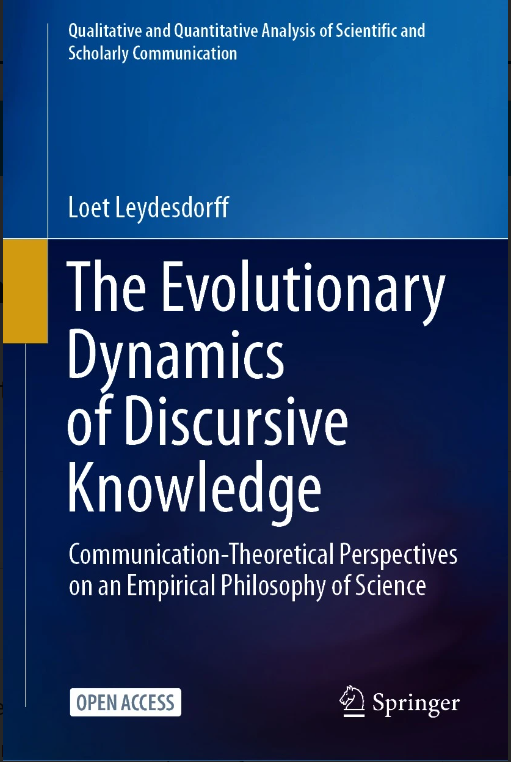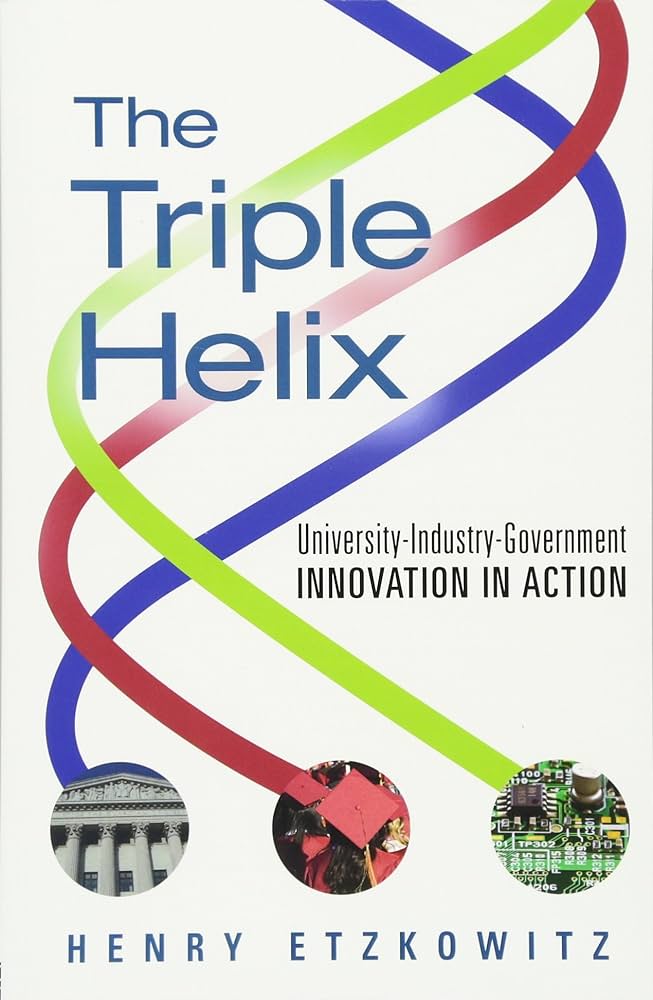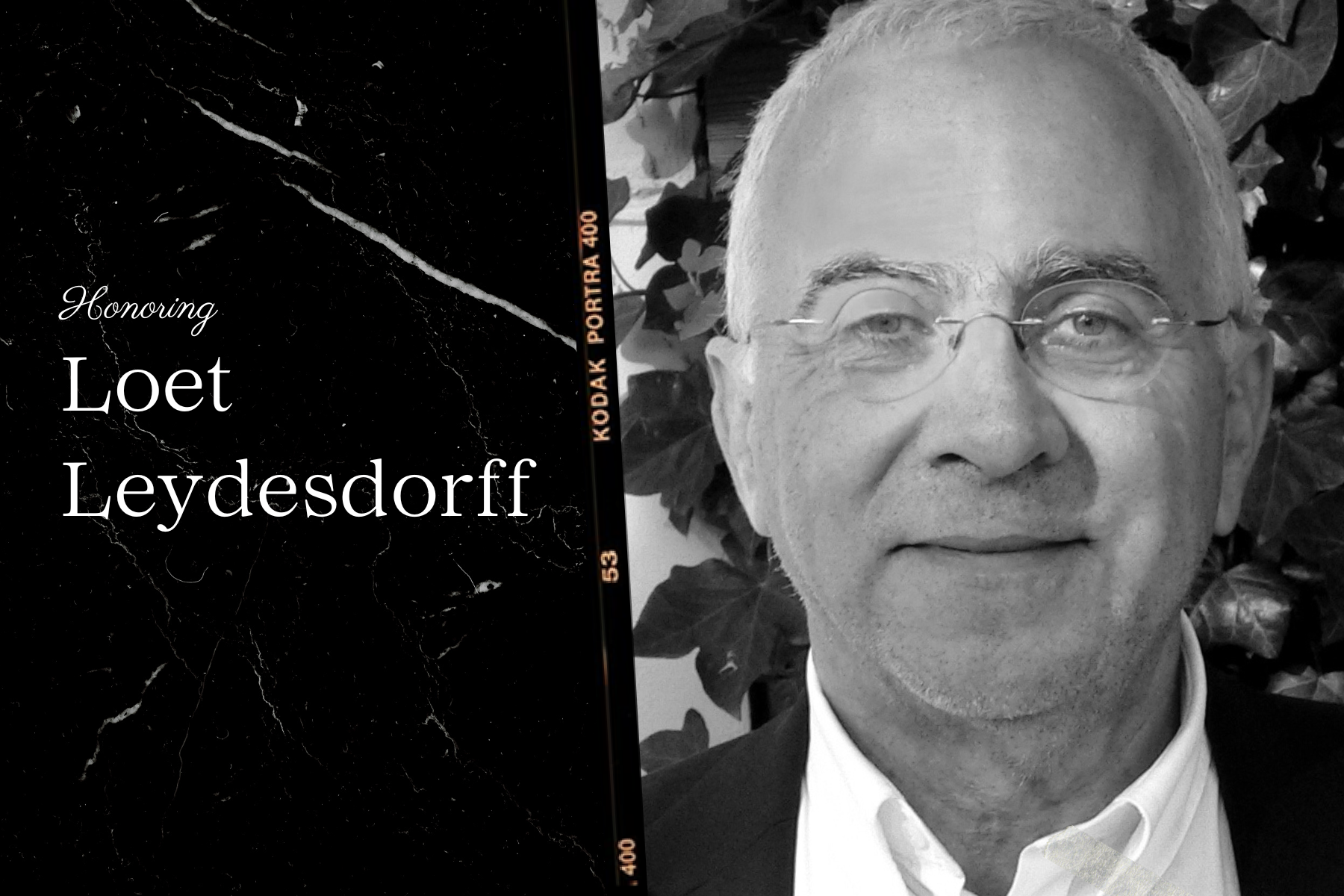This special issue of Triple Helix is devoted to the contribution and legacy of Loet Leydesdorff – By Helen Lawton Smith, Director, Centre for Innovation Management Research, Birkbeck, University of London. February 27 2024 h.lawton-smith@bbk.ac.uk
Triple Helix Volume 10 Issue 2 (2024) (brill.com)
Loet was a brilliant scholar and dear friend to many of us. He died in March 2023.
The five essays by some of his closest collaborators reflect on his ground breaking research and on his human qualities – his dedication, humility, and humanity. So what do they tell us?
Pioneering Contributions: The Early Years of the Triple Helix Model

The editorial by Marcelo Amaral and Yuzhuo Cai reminds us that Loet was years ahead of his time. He was a true innovator.
The first phase of his work with Henry Etzkowitz (1995-2003) laid the foundational concepts of the triple helix model. Between 2003 and 2012, Loet and Henry embarked on different but complementary paths to explore and advance those ideas to considerable effect. Then from 2012 onwards, Loet worked on the n-tuple helix concepts broadening the discourse round how many helices were necessary for the model (the answer was three).
His open access 2021 book „The Evolutionary Dynamics of Discursive Knowledge Communication – Theoretical Perspectives on an Empirical Philosophy of Science“ set the agenda for a revisionist version of the theory.
On a personal note, the authors of the editorial, like so many of us, are beneficiaries of Loet and Henry’s guidance and mentorship. Loet was intensely collaborative with an impressive number of domestic and international partnerships.
Exploring Loet’s Legacy: Contributions to Innovation Theory

The next piece is on the legacy of Loet Leydesdorff to the Triple Helix as a Theory of Innovation.
The authors, Marcelo Amaral, Yuzhuo Cai, Anne Rocha Perazzo, Carina Rapetti and Josepp Miguel Pique begin with a biography of Loet (who was actually Louis Andre) and the development of his work on scientometrics for which he won several scientific awards.
The second section provides a bibliometric analysis of his work using a series of subtopics as a framework. Among the interesting themes is that of content analysis.
The authors identified at least three significant Leydesdorff contributions to the Triple Helix model: evolutionist aspect of university-industry-government interaction; measuring triple helix linkages; and how many helices in a model are better?
Personal Reflections: Collaborating with Loet
In my personal account of working with Loet, I recount how wonderful it was working with him. I first met him at a Triple Helix conference in Turin in 2005. The event which led to our collaboration was the invitation to Birkbeck to host the Triple Helix conference in 2013. We turned to Loet for advice on how to pitch our bid. After conversations with Loet, the conference theme became, ‘The Triple Helix in a Context of Global Change: continuing, mutating or unravelling?’ He and I subsequently published a paper on this theme in Prometheus in 2014.
Loet was then invited to be a Visiting Professor at Birkbeck and became a very valued member of the Centre for Innovation Management Research (CIMR). He engaged with all of us from PhD students to senior academics. He helped write research proposals, gave keynotes at our events and mentored our members. He is much missed!
Applying Loet’s Concepts: Insights from Research and Practice
Next Inga Ivanova’s personal reflection was about how she approached Loet following the completion of her PhD. She suggested further development of the triple helix model in terms of mathematical collaboration. Her paper details the elements in the development of the model that she and Loet worked on – and reports that in the 10 years she worked with Loet she received 2,525 emails from him illustrating not only his dedication but also how he developed close personal connections with his colleagues. She notes that Loet laid the theoretical and methodological foundations which can service as the base for further development of the quantitative theory of meaning in inter-social communications in complex systems.
Finally, Han Woo Park’s tribute is based on a speech he gave in 2023 in homage to Loet Leydesdorff. In this speech he highlighted how the triple helix model can be deployed to discover a data-driven society. His application is a investigation of creativity and collaboration in Ho Chi Minh City using a „n-tuple helix“ framework based on Loet’s sociological theory of communication. He was able to argue from a social network standpoint, that a city’s innovation system is linked to its position in intercity and global co-authorship networks.
Loet made many extraordinary contributions to knowledge and made many, many friends around the world. Our thanks to Loet for being Loet.
References
Leydesdorff, L. & Lawton Smith, H. (2021). Triple, quadruple, and higher-order helices: historical phenomena and (neo-)evolutionary models Triple Helix 1-31
Lawton Smith, H., & Leydesdorff, L. (2014). The Triple Helix in the context of global change: dynamics and challenges. Prometheus, 32 4, 321-336. doi: 10.1080/08109028.2014.972135. ISSN 0810-9028.
Leydesdorff, L. (2021). The Evolutionary Dynamics of Discursive Knowledge: Communication-Theoretical Perspectives on an Empirical Philosophy of Science

